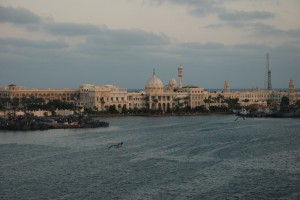
November 2012
When I was younger, there were certain cities and countries I never imagined visiting. Egypt and specifically Cairo were definitely on that list. Too much Israeli blood had been shed during wars with Egypt. I had no desire to visit a country that chose not to live in peace with its neighbor, Israel.
In 1979, I watched on television the historic signing of the peace agreement by Egyptian President Anwar El Sadat and Israeli Prime Minister Menachem Begin and witnessed by United States President Jimmy Carter.
Even with the peace agreement in place, I preferred to visit other places.
But, I learned many years ago to never say, “never.” Absolute statements are usually impossible to maintain.
Choosing a cruise itinerary is usually filled with compromise. Some sites are on my “bucket list” while others are much further down the list. With a dicey political atmosphere, Egypt was still a low priority. But, at the same time, the intrigue of Ancient Egypt offset my trepidation. How awesome would it be to travel to Giza to see pyramids and a sphinx?
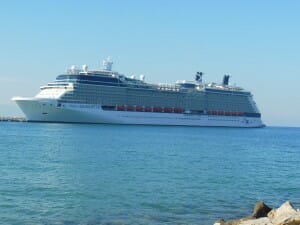
November 2012
So with a small bit of apprehension, my husband and I made reservations for a 14 day Mediterranean fall Celebrity cruise that included Rome (Civitavecchia), Cairo (Alexandria- 2 days),Egypt, Ashdod (2 days) and Haifa, Israel (1 day), Kusadasi (Ephesus), Turkey, Athens (Piraeus), Greece, Catania, Sicily, and Naples, Italy.
After two leisurely days at sea, we were escorted into the Alexandria harbor by Egyptian military personnel.
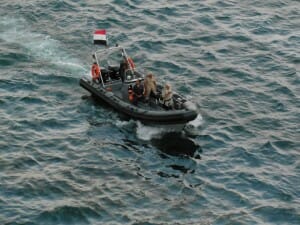
Some ports are easier to manage than others. Our preference was to take a prearranged shore excursion. Recent political unrest and the fact that we were Jews traveling in an Arab country made us favor being in a group tour and remaining inconspicuous. Based on recommendations from Carolina Ortiz, the Celebrity Cruise Excursion Director, we opted for the all day Classic Cairo excursion.
After leaving the port area, the bus drove through the streets of Alexandria and then headed to the highway. I overheard our fellow passengers remark about the overabundance of litter and the dilapidated buildings. Similar to other Third World countries, there was a total disregard for the environment. In many respects, it reminded me of some parts of India.
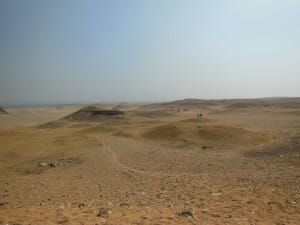
We knew our destination was nearby, when the landscape became an endless desert.
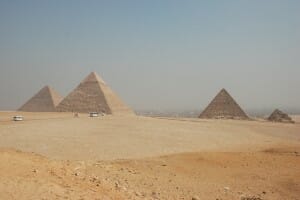
Everyone on the bus was eager to see the Giza Plateau where the Pyramids of Giza can be viewed. After a 3+ hour drive, our first stop was at the Western Plateau. We had the vantage point of seeing all of the pyramids with the city of Cairo in the background. Some of our fellow travelers opted for a short photo opportunity aboard a camel. A past Bedouin camel experience in Israel’s Negev Desert had satisfied my desire to ride a camel.
An overabundance of souvenir vendors harassed us as we exited our air conditioned bus. As the bright sun and the heat of the desert embraced us, we were grabbed by several children who were overly aggressive in their salesmanship. It was not an easy task to detach ourselves from their grip. A few armed Egyptian guards wandered about.
While I gazed at the pyramids, I remembered our recent visit to the British Museum. Treasures that were intended for a glorious afterlife were now thousands of miles away on display in a museum while the inside of the pyramids were barren. I doubt that the leaders of Ancient Egypt ever anticipated such a twist of fate. Then again, our tour guide told us that an untold number of artifacts were stolen by robbers who invaded the tombs long before the British arrived.
Since my childhood, I had become fascinated with this ancient culture that put an intense emphasis on life after death. The whole mummification process is filled with intrigue and mystery. Even though the concept runs counter to my Judaic beliefs, my curiosity remains intact.
From there we went to the base of the second pyramid. I had only gone a short distance when I felt something sharp inside my shoe. A freak thing happened. A narrow piece of metal had pierced through the sole of my shoe. Fortunately, I sensed something before it penetrated my skin. With a bit of maneuvering, Ira was able to remove this potentially dangerous nuisance.
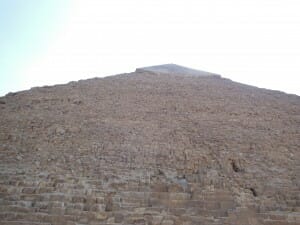
We walked around taking a variety of photos. Peddlers continued to harass us. Looking up at the towering structures, I couldn’t help but be perplexed by the mysteries that remain. Scientists and historians are still attempting to understand how the Ancient Egyptians were able to accomplish the amazing feat of building the pyramids without the use of modern machinery. Each block of limestone weighs approximately 2 tons.

Standing right next to the blocks, I could understand the enormity of the task at hand. Somehow all of these massive slabs of stone were placed on top of one another to form the pyramid.
Some of our fellow travelers paid a fee to enter the empty tombs. Instead, we chose to walk around the pyramids and explore an adjacent site.
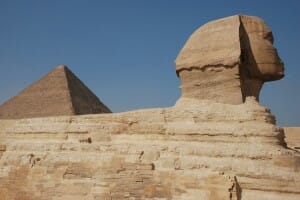
Once again we boarded the bus and drove a short distance to the Sphinx. Adjacent to the Sphinx was the Khafre’s Valley Temple which dates back to the reign of Khafre 2520-2494 BCE. This structure was made of limestone, Aswan red granite and had an alabaster floor.
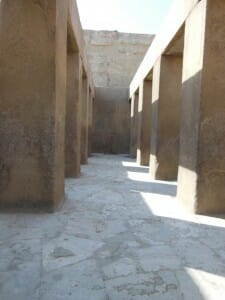
Our guide provided a couple of explanations for why the nose on the Sphinx was deformed. The following day, our Alexandrian guide provided another reason. Like other historical mysteries, one may never know for certain what caused a particular event.
Off in the horizon, we could faintly see Cairo’s skyline, a reminder of modern times.
As the midday sun shed its bountiful rays, I was content that it was November and not the summer.
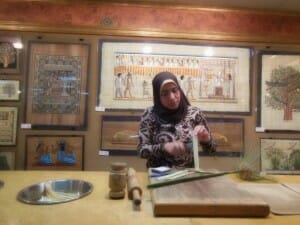
After stopping for a buffet lunch at a nearby 5 star hotel, we drove in a major traffic jam to Cairo. There we visited the Papyrus Institute, a tourist trap. An Egyptian woman demonstrated how the ancient Egyptian paper was made from reeds from the Nile River. A thorough soaking and the use of a special press were unique aspects associated with the process. Our guide and the salespeople were aggressively pursuing sales. Issues between fellow travelers and the store personnel caused the bus to leave later than expected.
On the way to the National Archaeological Museum, we passed by Tahrir Square. Months before, protesters gathered and voiced their opposition. Nearby buildings such as the National Party Headquarters and a hotel were ablaze. Just a few yards away, the National Archaeological Museum was spared, but there were unsubstantiated reports of looting. It was truly a miracle that this treasure trove of antiquity did not catch fire since the adjacent buildings had incurred major damage. As of the writing of this blog, agitated protesters are once again gathering in this area.
(Please note that the official government link for the museum website does not always work. For basic information check an nonofficial site like Wikipedia.)
By the time we arrived, there was only an hour until closing time. What a shame. Our tour guide provided an abbreviated overview of the King Tutankhamen exhibit and then we had about 30 more minutes to take our own tour of the ancient treasures. The exhibits were dimly lit and many of the signs were either missing or difficult to read. This was in sharp contrast to the British Museum that included excellent signage, proper lighting, and explanations. In London, I was able to take a plethora of pictures whereas in Egypt cameras were not allowed inside the museum. Instead, I purchased a colorful guidebook.
Now I rely on the 63 page guidebook, Masterpieces of the Egyptian Museum, to refresh my memory. The book only showcases a tiny fraction of the holdings. Oh, how I wish that we could have passed on the papyrus demonstration and spent more time at the museum.
With only a limited amount of time, we went to view the Treasures of Tutankhamen. The workmanship on the artifacts was magnificent. We saw “The Small Hunting Coffer” shown below.
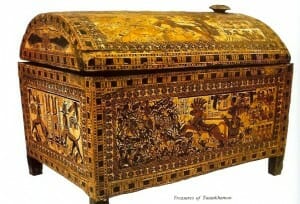
Another striking item that was recorded in the guidebook is the Ceremonial Throne. The chair is made of ivory and semi-precious stones.
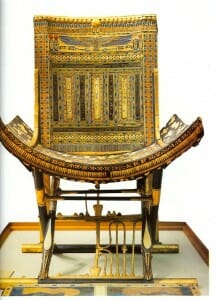
During the 3+ hour trip back to the Alexandria’s port, I looked through the guidebook and glanced at my pictures. What an incredible opportunity to see one of the Wonders of the Ancient World. Had I adhered to my original conviction to never visit Egypt, I would have missed out on this amazing part of history.
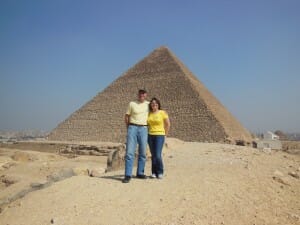
CAN YOU SHARE?
Are the pyramids and sphinx on your bucket list?
RELATED POSTS
An Afternoon in Alexandria, Egypt
Exploring Ancient Civilizations at the British Museum, London
A Step Back in Time- The Jewish Catacombs in Rome
A Step Back in Time: The Jewish Catacombs in Rome
BIO
Sandra Bornstein is a freelance travel and lifestyle writer. She shares her experiences and recommendations on this blog and on other websites. Sandra contributes a monthly travel tip column for Golden Living, a Best Version Media magazine.
Sandra is the author of MAY THIS BE THE BEST YEAR OF YOUR LIFE. This memoir highlights Sandra’s living and teaching adventure in Bangalore, India. As a licensed Colorado teacher, Sandra has taught K-12 students in the United States and abroad. She also taught college level courses.
Sandra’s memoir was a finalist in the Travel category for the 2013 Next Generation Indie Book Awards, the 2013 International Book Awards, the 2013 National Indie Book Excellence Awards, 2013 USA Best Book Awards, and a Honorable Mention award in the Multicultural Non-Fiction category for the 2013 Global ebook Awards.
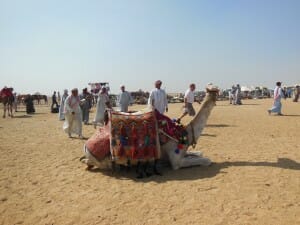

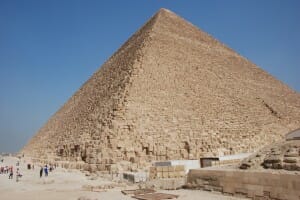
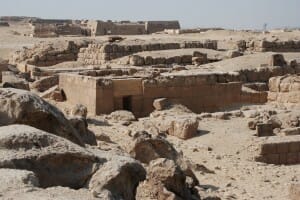
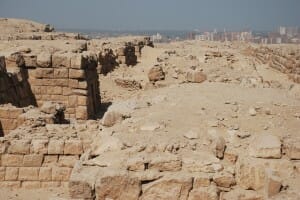
Leave a Reply
You must be logged in to post a comment.